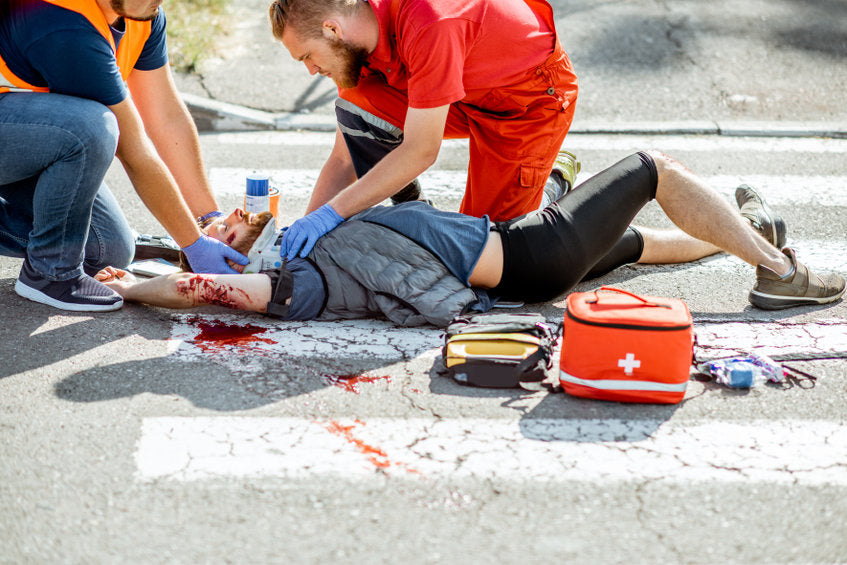Cuts and wounds can be scary, but with a quick and effective response they can often be taken care of without panic. Small and even moderate cuts can often be handled at home with a good first aid kit, a trained helper, and immediate attention. But with a large hemorrhaging wound in a critical area, a person can bleed to death in under five minutes if it’s not quickly stopped. If someone loses more than 40 percent of their blood, which is about 2,000 mL, they will die. It’s imperative to get the bleeding to stop as quickly as possible and to rush to the hospital for blood transfusions.
Always call 911 if bleeding is severe, if you suspect there is internal bleeding, if you notice an abdominal or chest wound, if you cannot stop the bleeding after ten minutes of firm and steady pressure, or if blood is spurting out of the wound. Even if you call 911, you should do what you can to stop the bleeding while you wait for responders to show up.
Here are some ways to try and get a severe wound to stop bleeding in an urgent situation:
- Apply direct pressure to the wound with a clean cloth, tissue, or piece of gauze until you notice the bleeding stop. A good first aid kit should have the appropriate cloth or gauze for this application.
- If blood soaks through the material, do not remove it. Place more gauze or cloth on top while continuing to apply pressure.
- If the wound is on someone’s leg or arm, lift the limb above the heart, if possible, to help the bleeding slow down.
- Wash your hands before and after giving first aid and, if possible, before you clean and dress the wound.
- Do not apply a tourniquet unless the bleeding is severe and has not stopped with the pressure you’ve been applying.
- Clean the wound initially with soap and warm water only. Rinse the soap completely to prevent irritation.
- Do not use hydrogen peroxide or iodine. These products can cause tissue damage.
- Protect the wound with antibiotic cream to reduce infection risks and cover with a sterile bandage from your first aid kit.
- If the wound is deep or has jagged edges or is gaping open.
- If the wound is on someone’s face.
- If the wound has debris or dirt in it and you cannot safely get it out.
- If you see signs of infection such as redness, a discharge, tenderness, red streaks around it or the person is running a fever.
- If the area feels numb.
- If the area is from an animal or human bite.
- If a person gets a deep cut or puncture and has not had their tetanus shot in the past five years.
